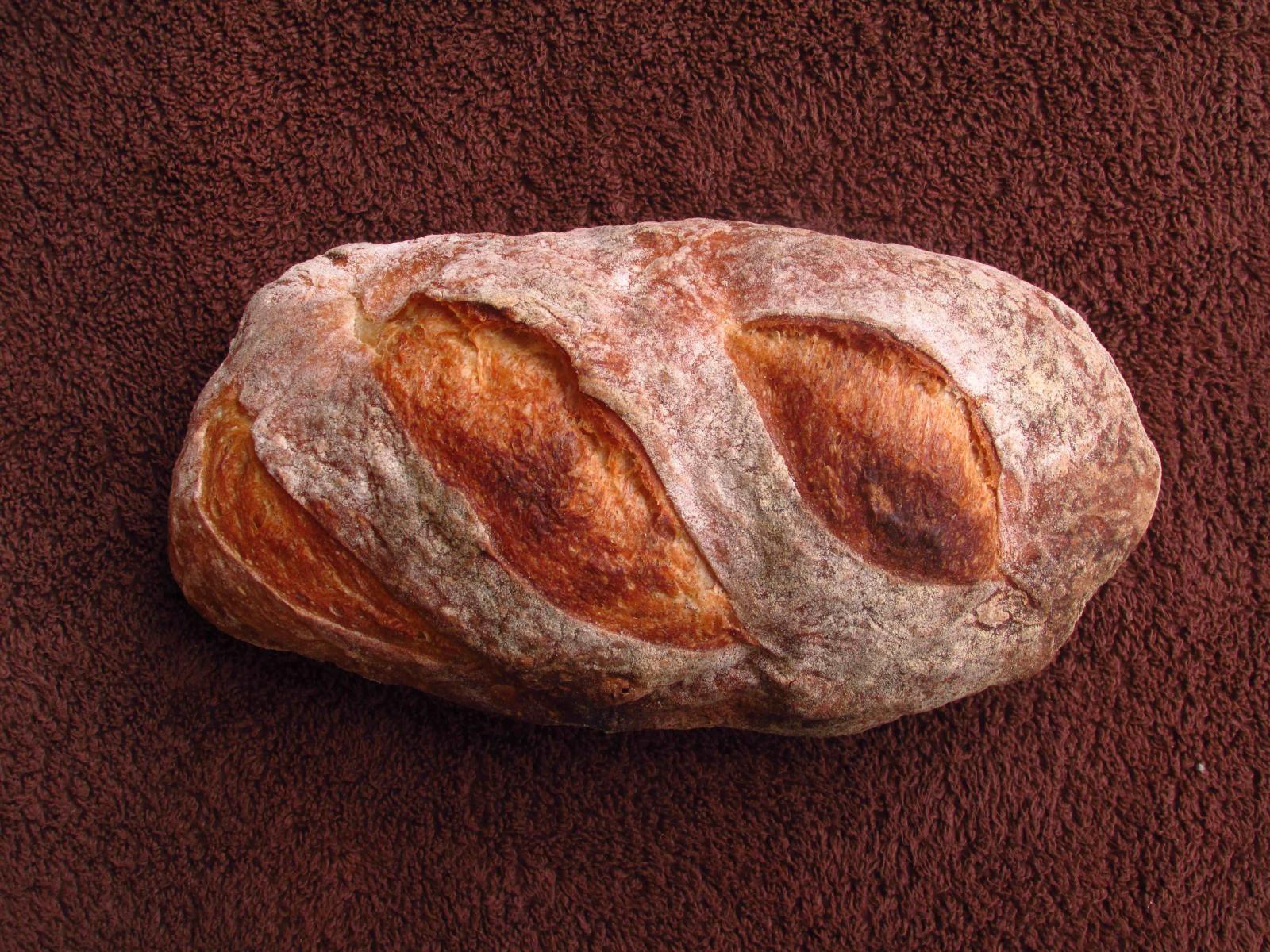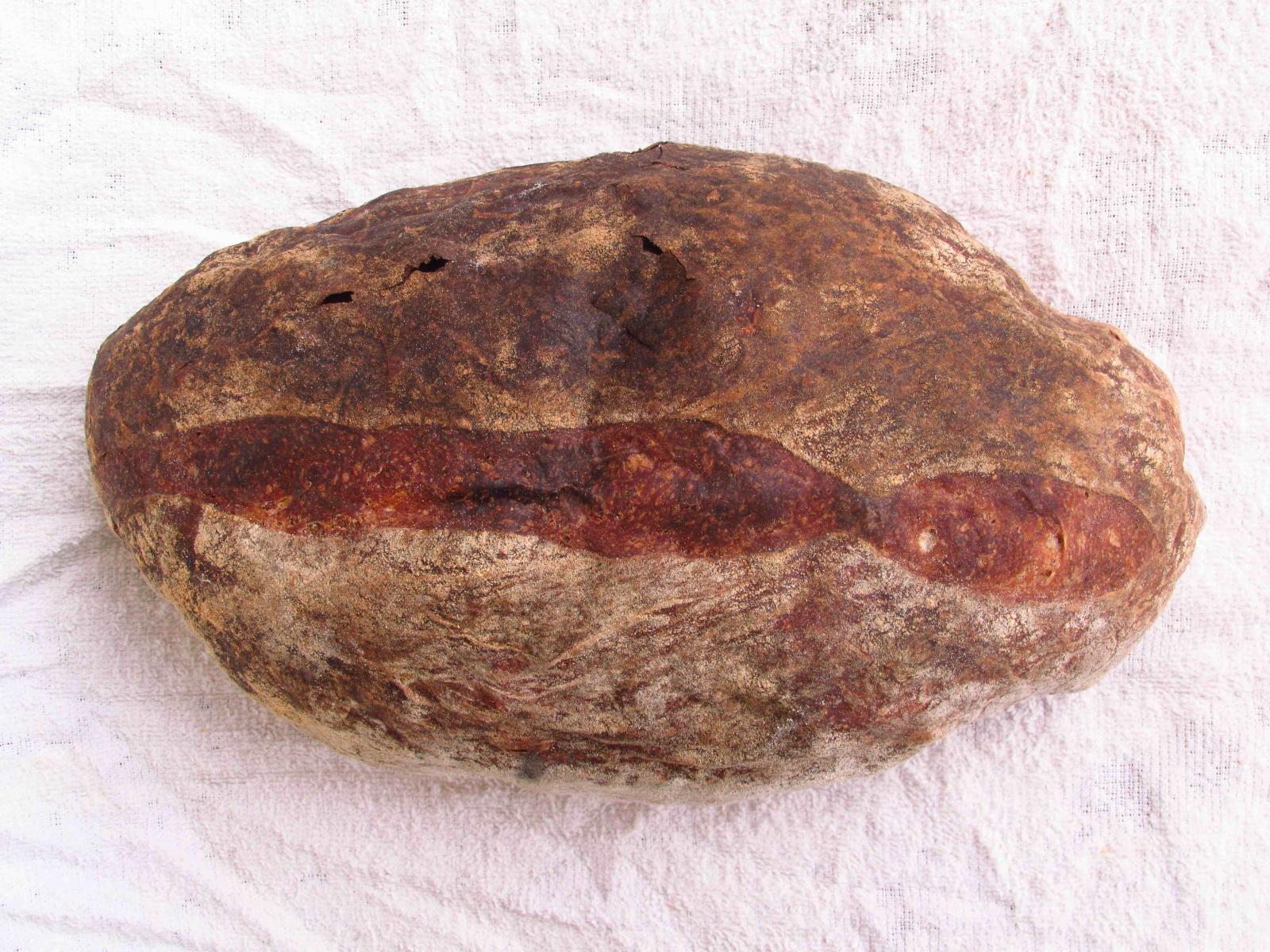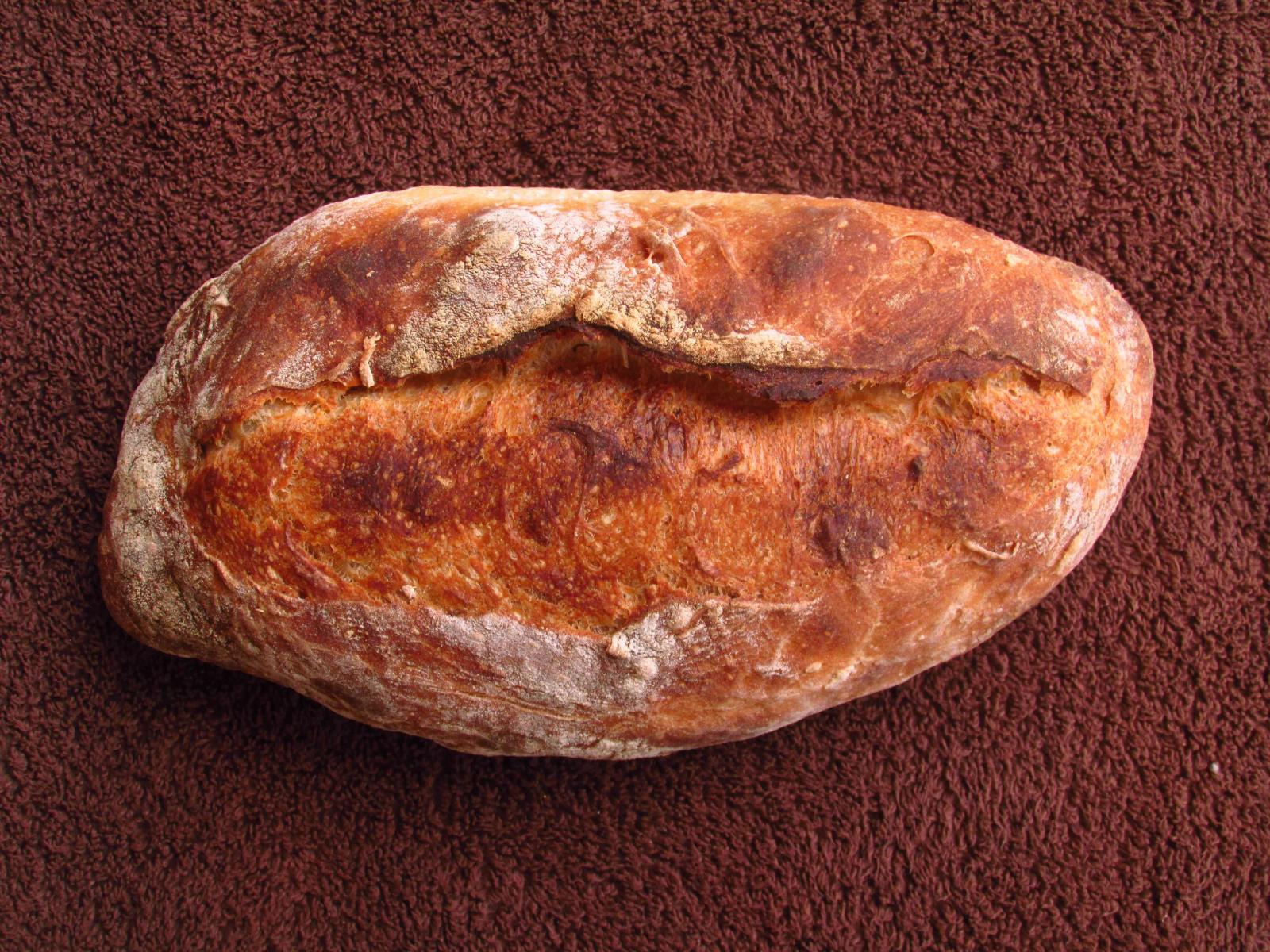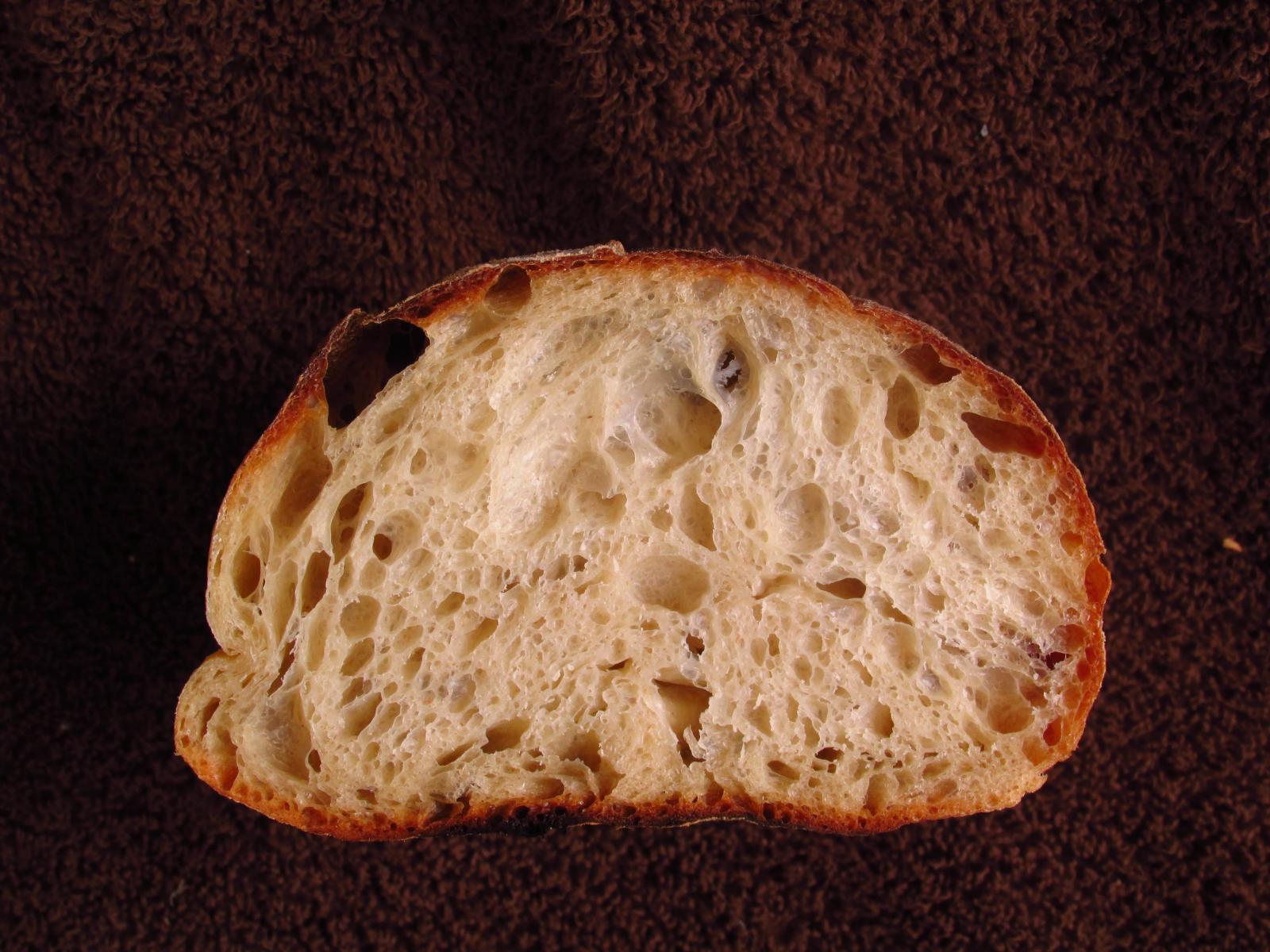
Latest Brick Oven Tartine Effort
Hi All,
After a number of successful batches of Tartine Country loaves in the combo-cooker, I made my third batch of the same last weekend in the WFO. I was determined to get the oven hotter than my first two attempts, the objective of getting a deeper-colored crust instead of my previous pale loaves. I use a handheld infrared laser thermometer and for the life of me, still can't figure out how what part of the oven to read to get an accurate temp. I am positive that the air temperature is quite a bit lower than the dome temps. What part the dome's radiation plays in loaf color is an entirely different discussion for later.
Additionally, I am finding out that the downside of soapstone floors (great for pizza) mentioned in The Bread Builders is, sadly, true. The heat transfer is much greater than the firebrick dome, making it really easy to burn the bottoms of my bread. Even with parchment to start the bake, they burned a little on the bottom.
Based on the attached pics and your experience, if any of you have advice on how to alleviate the burned bottoms, I would appreciate it. I am thinking of sliding the bread onto some (half-inch-mesh) stainless steel screens half-way through the bake. Also, any advice on shaping, I think I need it.
Otherwise, I have changed my opinion on a brick oven being secondary to a combo-cooker's ability to create a deep, rich crust, which I love.
TIA,



 John
John


Perhaps post this as a blog. What was your recipe and method?
To begin, your first loaf looks about ideal, and the crumb shot is awesome. Second loaf looks on the better proofed side. Third looks like it got a bit of a skin before baking.
I have baked about 2000 loaves of bread in my brick oven (Pompeii oven, 21 in. radius hemisphere, firebrick). At least 1000 of those have been Tartine bread. I have never known air temperature in my oven; I like my first load in the oven when the floor is around 500 or 520 and the ceiling is about 550. It takes 20-25 mins to bake for me.
Your coloration indicates you have the temperature and steam retention down. Screens toward the end of the bake seem like a good solution to the burnt bottoms. Also, you might open the door for a bit (like 10 mins) before you load bread. The floor cools faster than the dome with the door open, so this could take enough off the bottom heat to prevent burning.
My greatest contribution to The Fresh Loaf is repeating Hammelman's advice:
Use an insulated cookie sheet to slide under your loaf 1/2 way through the bake if you are getting burned bottoms.
You will get the burnt bottom figured out soon enough the color of the crust and that crumb are near perfect. Well done and happy baking.
for taking the time to share your wisdom and experience. Each of your pieces of input are invaluable.
Michael, I am grateful for your assessment. The over-proofed assessment tells me a lot about my proofing window and has me excited about tightening up my still emerging process control. Your 10-min pre-bake recommendation will certainly be taken, as is your advice in a previous thread to bake often (my WFO has been operational almost 1 year).
I think I will test a cookie sheet and screen next bake to see what effect each has in alleviating the burned bottoms. Thanks, David.
Thanks for the kind words, dabrownman. You made my day...
Abe, I followed Robertson's Tartine Country loaf recipe (don't we all start that way?) using KAAP and a starter I got from SCChris locally. It is the only starter I have ever worked with. The only change to the process is that I now slap and fold instead of S&F, which I'm guessing incorporates more air because after an hour and a half (3x) the dough has enough gluten built up it looks like a football that is difficult to compress. I'm clueless as to when to stop doing these.
I fire my oven during the autolyze and feed it until the dome temp reaches 775F. Then I close it up to equalize. I'm only three sessions into WFO baking, but my target dome (wall) temp is 550F. I use a hand-held water sprayer and after a really good pre-bake spraying add 4-5 really good squirts every five minutes 3x. I also have a cast iron pot with boiling water in the corner, which I pull out half way through the bake.
There may be better ways to do this, and I'm all ears. The info and advice on this site is amazing, and I'm glad I joined since moving over from Forno Bravo after my oven was up and running. Not sure what you mean by blog.
My sourdough journey was one of self discovery. Always aware of sourdough but my interest was sparked as my love for baking grew. I dove in the deep end and created my own starter from scratch. Then I scoured recipes and through trial and error, and many flops, found my own way. Then I came across TFL and my knowledge grew with all the wonderful help from everyone here. So as far "don't we all start that way" the answer is... Not Abe :)
By a blog I mean instead of a forum of questions and ideas you can create a blog of your account. Put up photos and the recipe so other people can compliment you, see your pictures, share your experience and try it themselves. Less of a query, question and answer, advice. And more of an account. The photos you see on TFLs front page are from blogs.
I'm gonna look up that recipe. Thank you.
"The Window Pane Test"
When your dough passes the window pane test the kneading is done. You should be able to take a bit of the dough and stretch it, between your fingers gently, so you can get a thin membrane which doesn't break and you can see through it.
There are some YouTube videos you can look up to see how it's done.
There are a few ways but this is quite effective.
Thanks, Abe. I'm familiar with the test (from pizzamaking.com) but have never gotten around to doing it. I read in dmsnyder's San Joaquin Sourdough thread that when tears appear amid performing S&F's, it's time to stop, because the gluten has stretched to its limit.
All good info.